Toshiba 20AF42
January 16, 2022, 9:56 pm
January 13, 2025, 3:39 pm
Summary
Flat set with a high performance invar shadow mask and a full range of inputs.
Manuals
Media & Promo Materials
Notes
A remote is required to switch video inputs. Holding 'Volume -' on the set and 6 on the remote will display the total number of hours in operation in hexadecimal. Holding 'Volume -' on the set and 9 on the remote will access the service menu. To disable velocity modulation in hardware, disconnect the cable connected to CP852 on the neck board.
This set uses the Toshiba TB1253N jungle chip, like the previous model, the 20AF41. But instead of continuing to use the Toshiba TC90A53F comb filter, this model switched to the poorer performing Sanyo LA76600M-TLM.
Composite 240p Performance
by Eli Krause
For composite decoding this set uses a Sanyo LA76600M-TLM, a 3-line digital comb filter. Depending on the console/revision, blending effects may be broken, and edge artifacts are slight to moderate. It displayed an exceptionally high amount of dot artifacting across all consoles tested. An example of the many dot artifacts are highlighted in the second picture below in red. Using an external notch filter to decode composite instead (guide here) and would blend all dithering patterns, reduce edge artifacts, and remove nearly all dot artifacts.
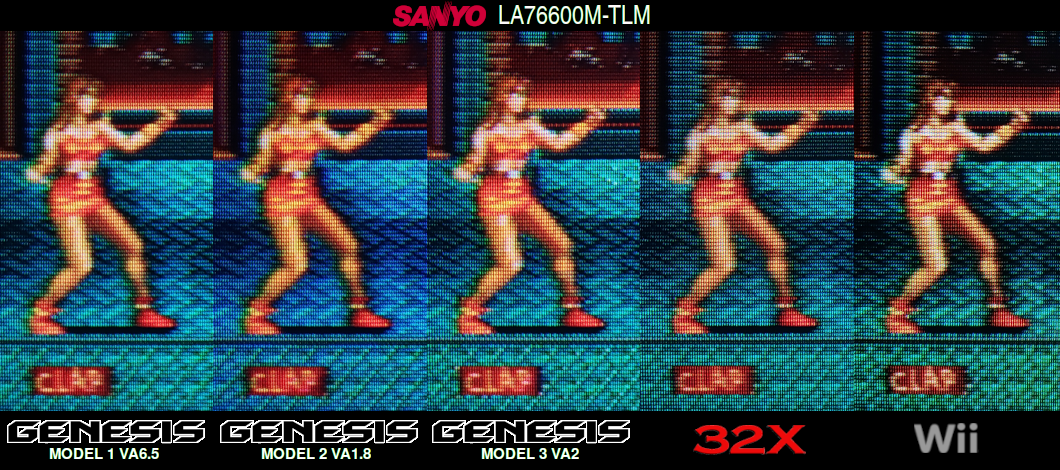
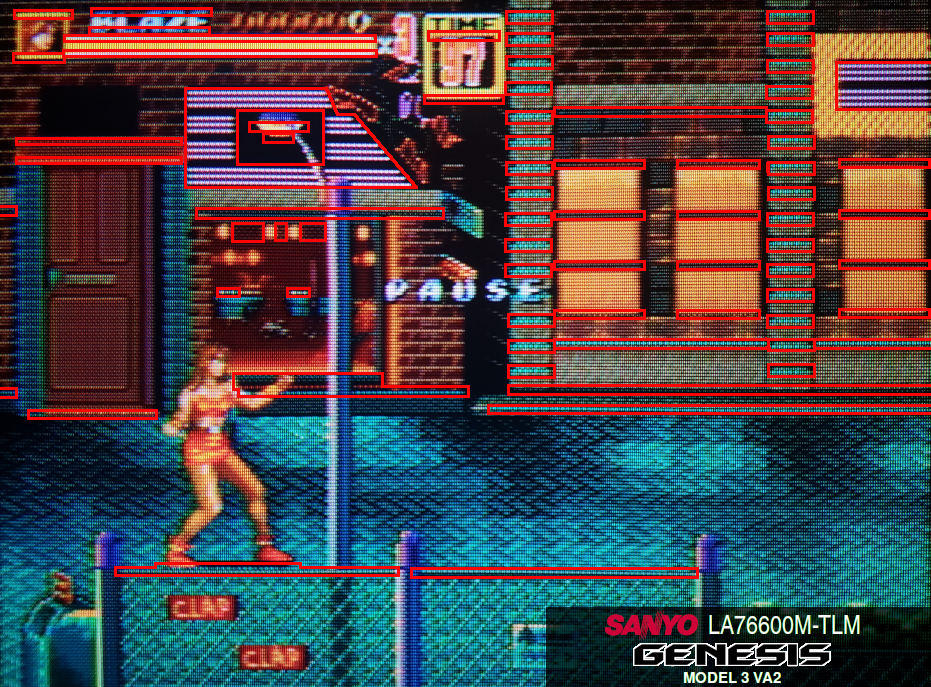

Gallery

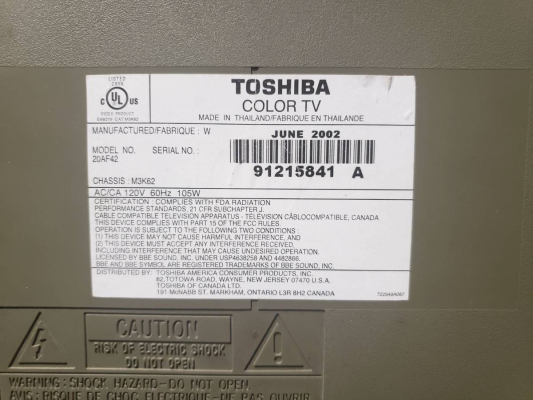
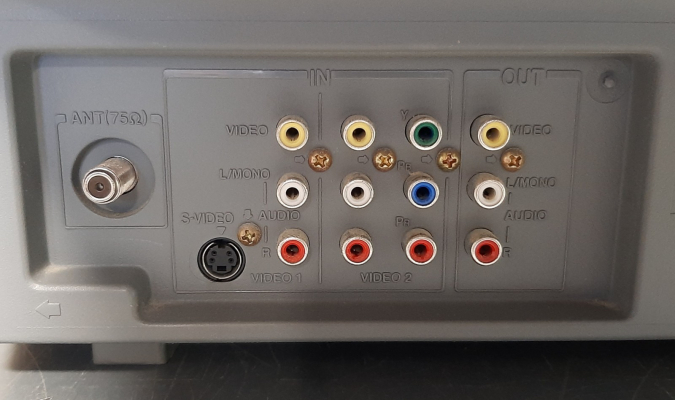

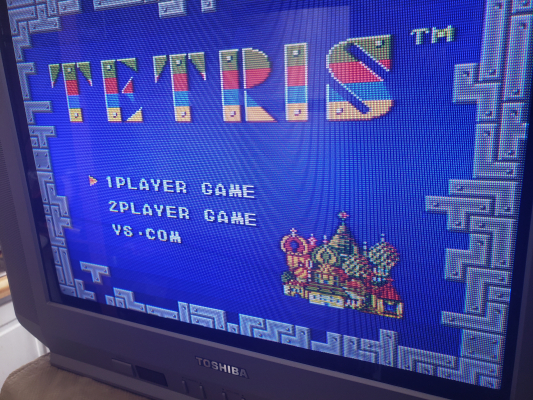





| Specifications | |
|---|---|
| Brand: | Toshiba |
| Manufacturer: | Orion |
| Model: | 20AF42 |
| Series: | AF |
| Viewable Size: | 20" |
| Inputs: | Composite, S-Video, RF, Component YPbPr |
| Native Resolutions: | 240p, 480i |
| Horizontal Scan Range: | 15 kHz |
| Vertical Scan Range: | 60 Hz |
| Formats: | NTSC |
| Aspect: | 4:3 |
| Adjustments: | OSD Customer Controls, OSD Service Menu |
| Horz. Output Transistor: | 2SD2499 |
| Vertical Output IC: | AN5522 |
| Jungle IC: | TB1253N |
| Comb Filtering: | 3-Line Digital |
| Comb Filter IC: | LA76600M-TLM |
| Tube: | A51LVV896X , A51LVV896X07 |
| Heater Voltage: | 6.3v |
| Deflection: | 90° |
| Mask: |
Slot, Invar

|
| Tint: | Dark |
| Removable Glare Film: | No |
| Speakers: | Stereo |
| Remote: | RC-DU |
| Chassis: | M3K62 |
| Weight: | 50.6 lbs (23 kg) |
| Application: | Consumer |
| Launched: | 2002 |
| MSRP: | 329 USD |
| Country of Manufacture: | Thailand |
| Mods: | RGB via Mux |
| Degaussing: | Automatic on Power-on |

 This work is licensed under a
This work is licensed under a